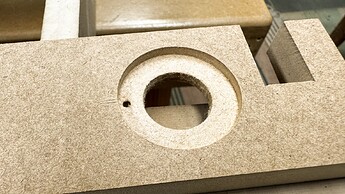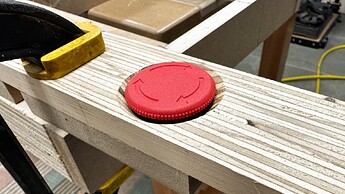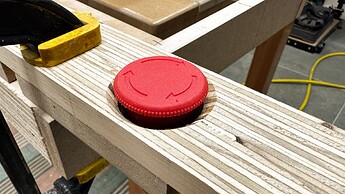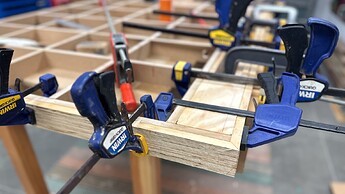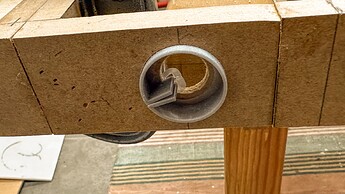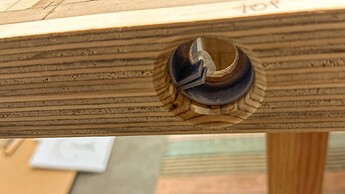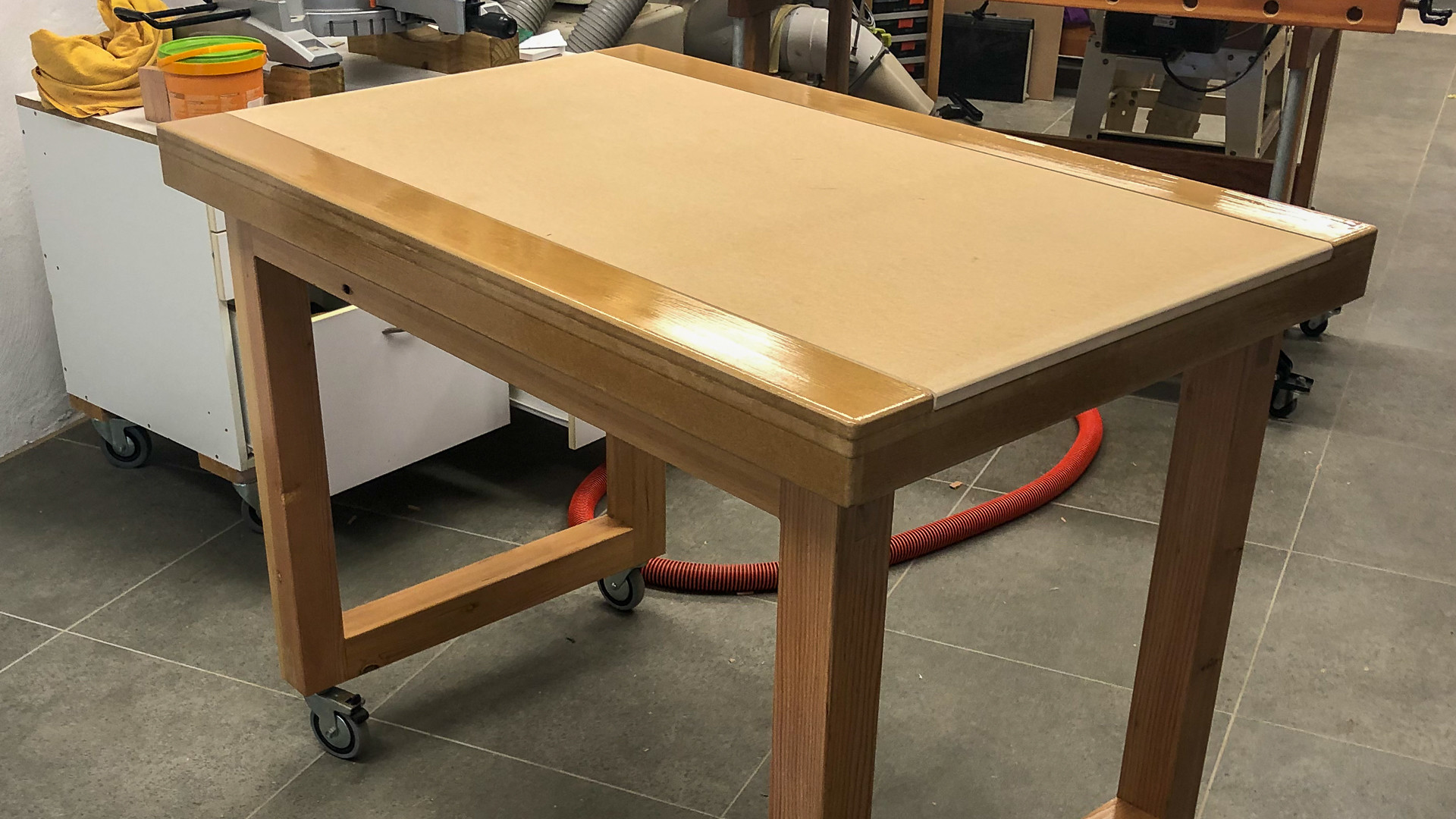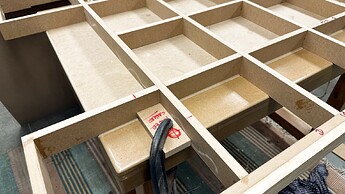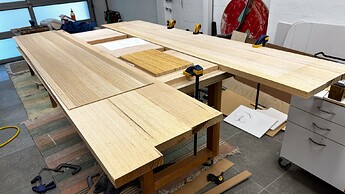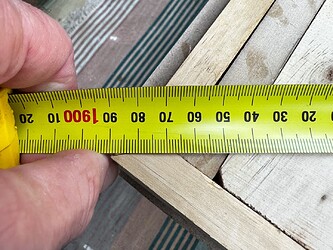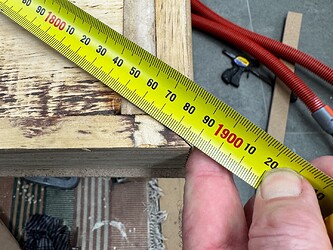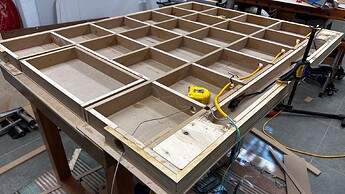Think cardboard carton. Really rigid lightweight structures just need to be constrained at the corners, but in the case of a table all those bits inside just help to keep the skins apart.
And you’d think after all the effort that I’ve been putting in, I’d have the patience of Job (that’s the bloke from the old testament not the bloke from Apple), but it doesn’t work like that.
After a late night watching F1, I woke up too grumpy to fix the stapler/brad nailer so thought I’d get on with it anyway.
I remembered to check for square (less than 1mm), and level (as close to zero twist as I can measure) and clamped a couple of chocks in place so that nothing could move., and after that things went slightly downhill!
I cracked open a new bottle of PVA glue, without for a minute thinking it would be much less thixotropic than the year old one. All went swimmingly until I realised that there were runs all over the place which meant I was actually gluing the thing to my bench, and of course there was no way of knowing what was going on.
So I flipped it over (cleaning the bench while balancing the thing on edge) and made a perimeter of clamps and packers while hoping the glue wasn’t going off too quickly. Wasn’t happy with how level it wasn’t so cleaned up the runs and flipped it again, only to discover that my clamps made it all too tall to flip.
In the end I did manage, and discovered that one of the advantages of having several unfinished projects is all that glued up furniture blanks lying around make nice presses.
I think it’s be OK, but I have three or four dozen clamps that need to go back in their rack and I’ll fix the stapler before I do the other side this evening.
